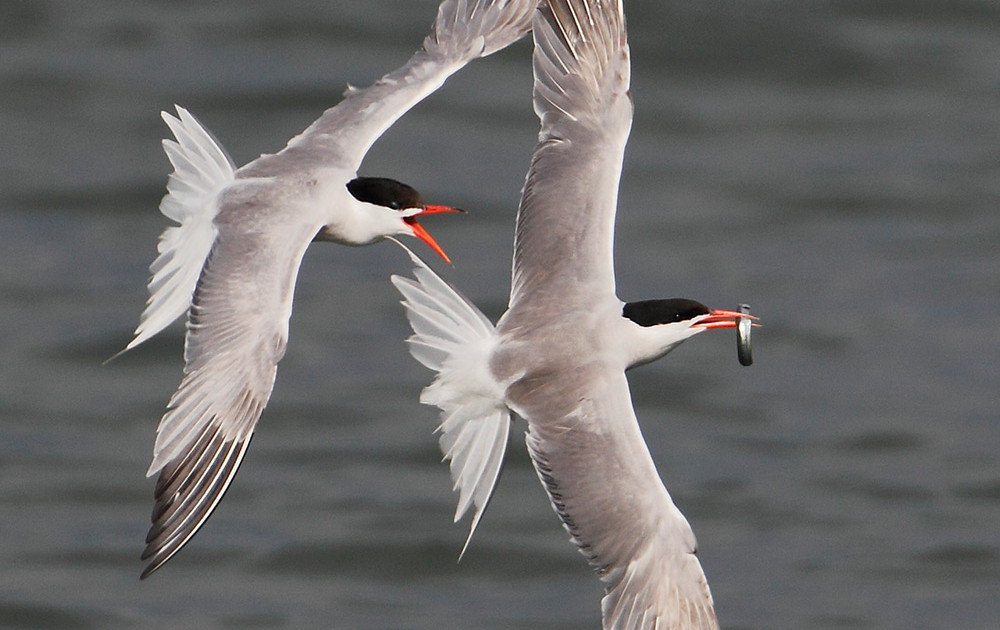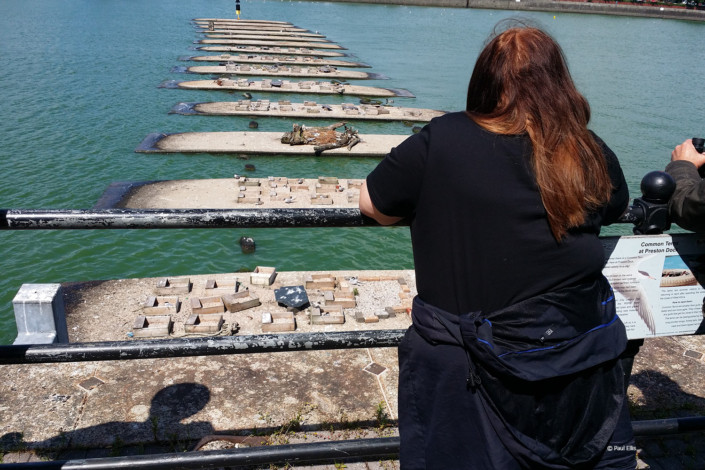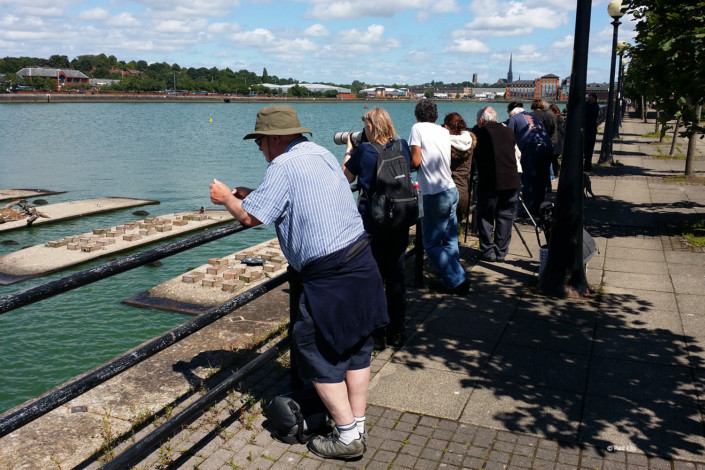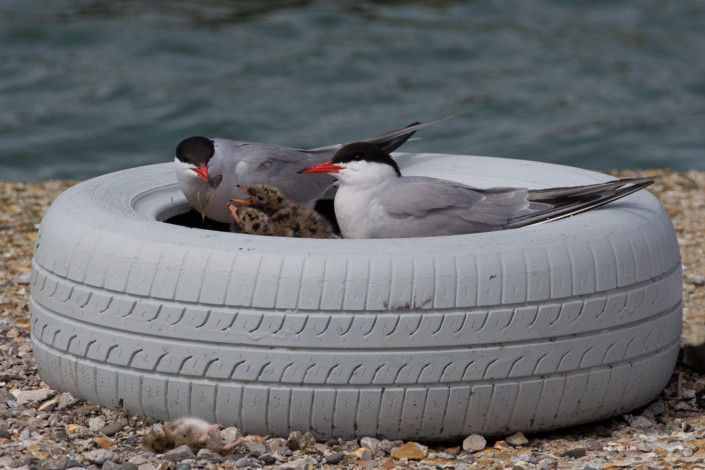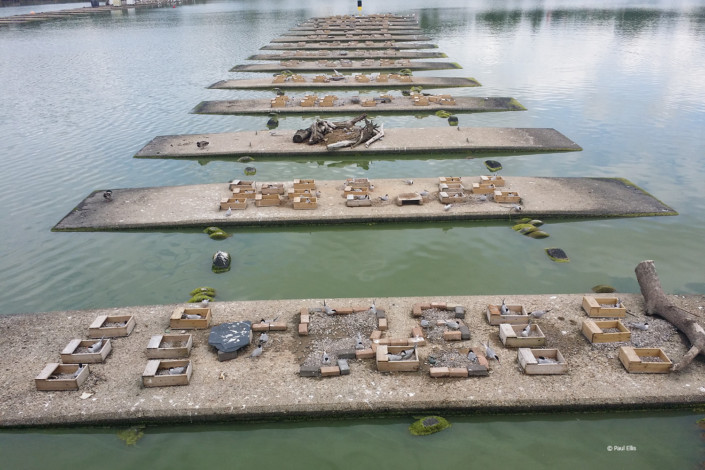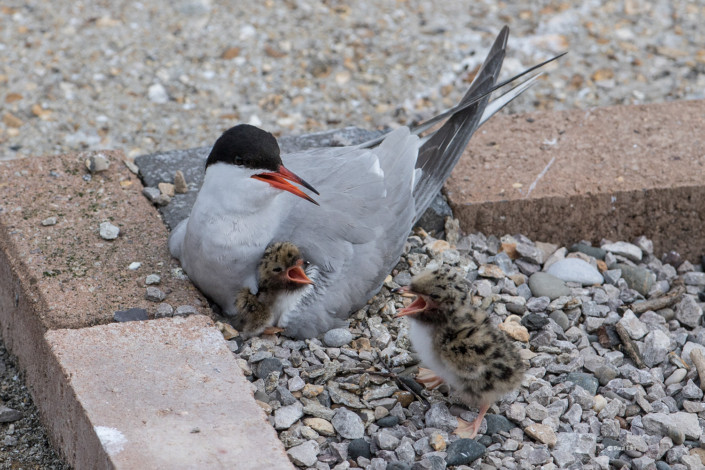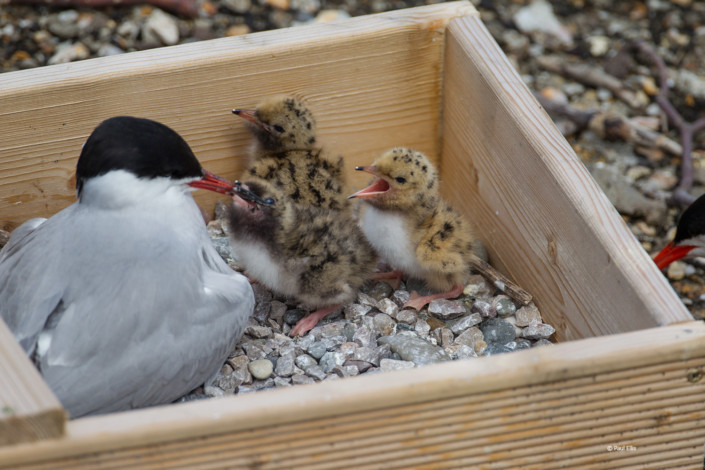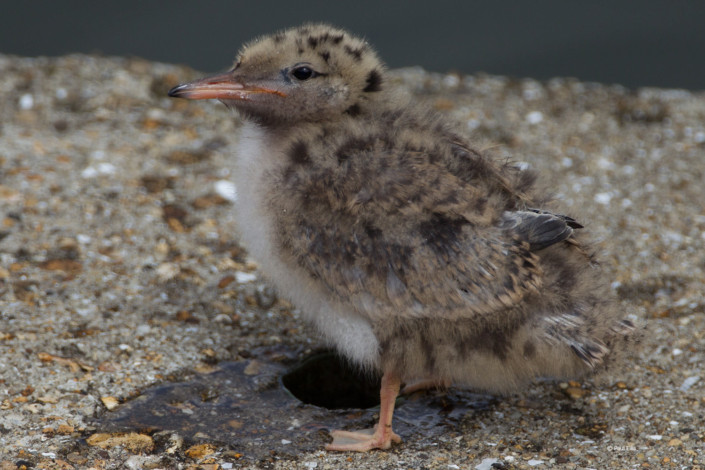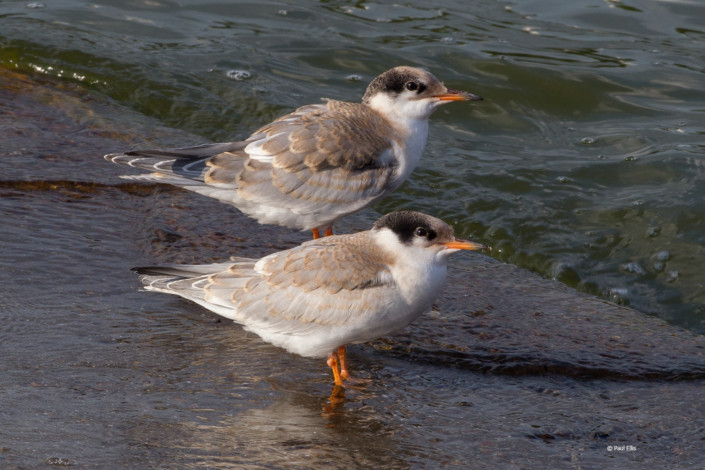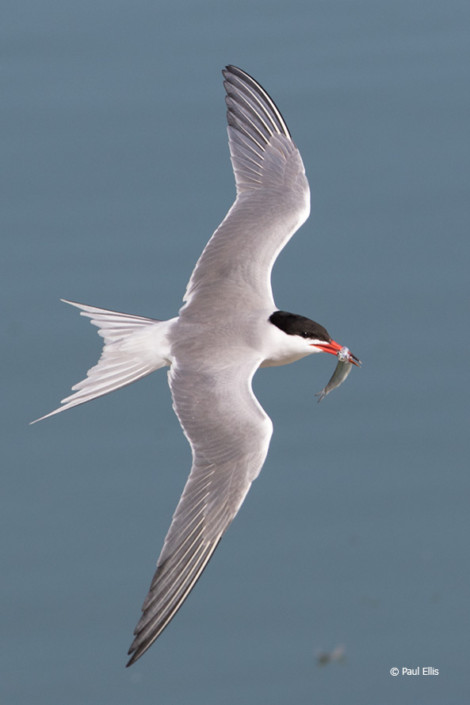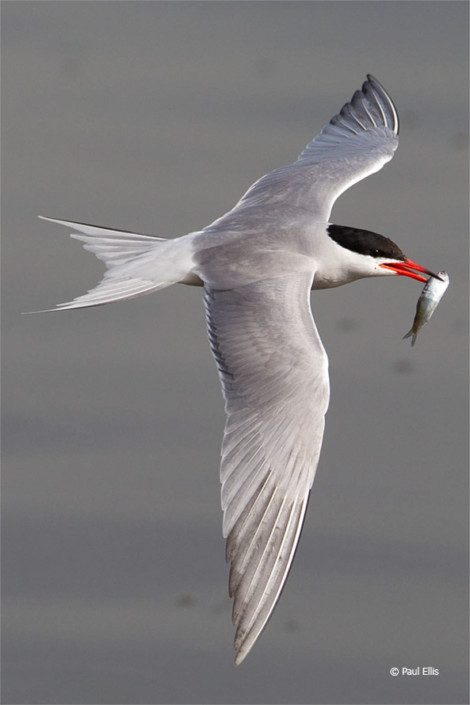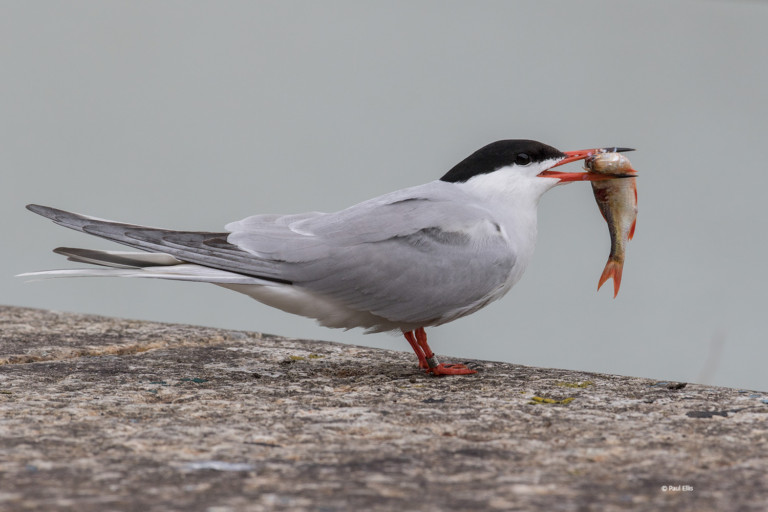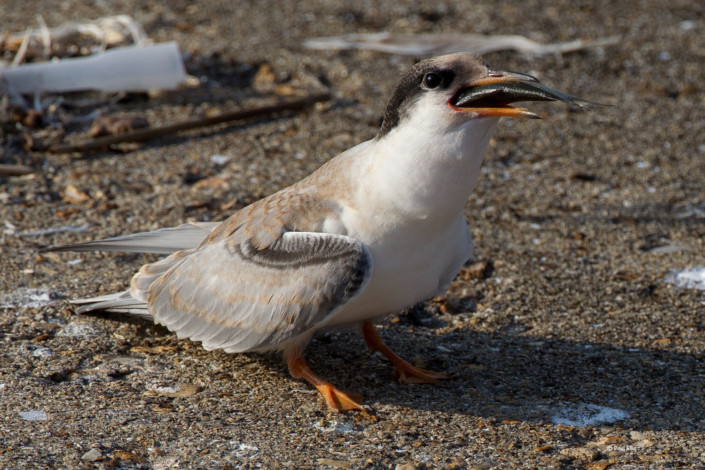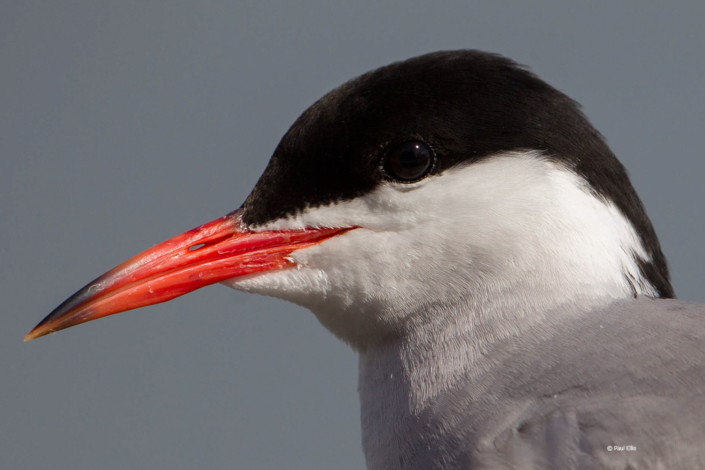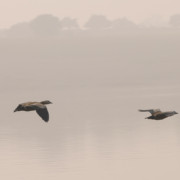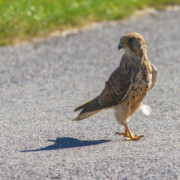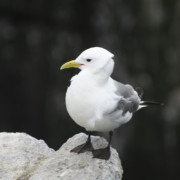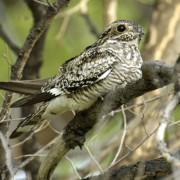Right in the middle of the City of Preston in Lancashire there is a thriving Common Tern colony at Preston Dock. The dock is owned and maintained by Preston City Council who have collaborated with the Fylde Bird Club (FBC) www.fyldebirdclub.org to encourage the terns to nest here. There are over 130 pairs of Common Terns and 4 pairs of Arctic Terns nesting on wave breakers in the dock. The closest nests are so near to the public path around the dock that chicks and eggs in the nests can be seen without binoculars.
The site, which is now used as a marina, is 9 miles from the sea but is connected to it by the River Ribble. The Albert Edward Dock, to give it its full title, opened in 1892 when it was the largest single dock in Europe. It is an enormous artificial lake measuring 3000 by 600 feet. There are rows of wave breakers floating in the water that protect the moored boats by damping out waves in windy weather. However, these wave breakers also provide islands for the terns to nest on.
Common Terns have tried to nest on the wave breakers since 2008 but originally struggled owing to a lack of suitable nesting material. In 2011 FBC took action by providing artificial nest sites using recycled tyres and gravel. Preston City Council supported the work and provided a boat to ferry Club members out to the wave breakers. Every year since, more nest materials have been provided by FBC and Preston City Council have worked alongside Club members. FBC Chairman, Paul Slade, designed and made the first wooden nest box, which proved highly successful. FBC and local schools have now made 170 such nest boxes. They provide eggs and chicks with shelter and protection from predators. The RSPB have actively supported the project, offering advice and holding public engagement events on site to show people the birds.
As if the colony itself was not interesting enough, the background of 79 individual birds is known. Using telescopes, local birders have managed to read the metal BTO leg rings that were fitted when the birds were nestlings.
The headlines are:
4 birds are over 18 years old
Most were ringed at Shotton on the River Dee, North Wales, others are from Rockabill (Ireland), Teesside, Anglesey, Surrey, Aberdeen and Orkney.
The record traveller was ringed in Namibia in March 2011 and has been seen at Preston Dock for the last four summers.
This year there is a bird wearing a Belgium ring but we have yet to hear where it was ringed.
Although the dock is huge it doesn’t contain much suitable food for the terns. They mostly commute to the sea hunt for food and they also fish along the nearby River Ribble and the Lancaster Canal. The birds are so close to the watch point that a variety of sea fish, fresh water fish and crustaceans can be identified when the birds return.
The Terns arrive back at the colony in late April and stay through August before departing for their winter home off the coast of West Africa. The first chicks hatch during the second week of June and can fly by the end of the month. However, the season is protracted and many pairs start nesting later.
The tern colony is a great amenity that attracts many visiting birders and photographers. The great features of this site are the unmatched close views, ease of access, it’s always ‘open’, no need for hides, no disturbance is caused to the birds and it’s free! The colony also attracts a lot of passing interest from the general public which helps spread the conservation message and promote a wider appreciation of wildlife.

